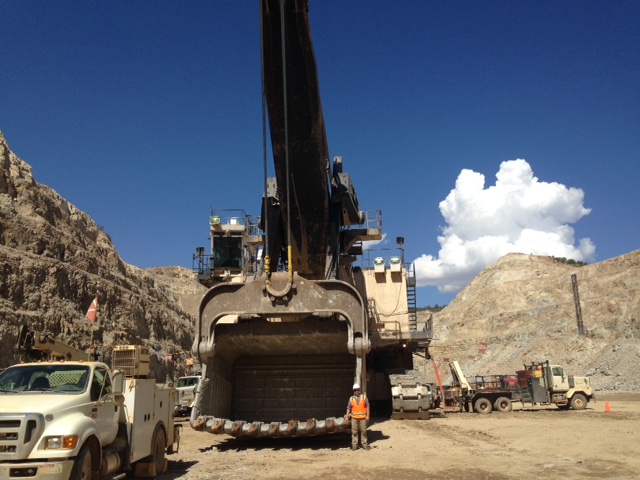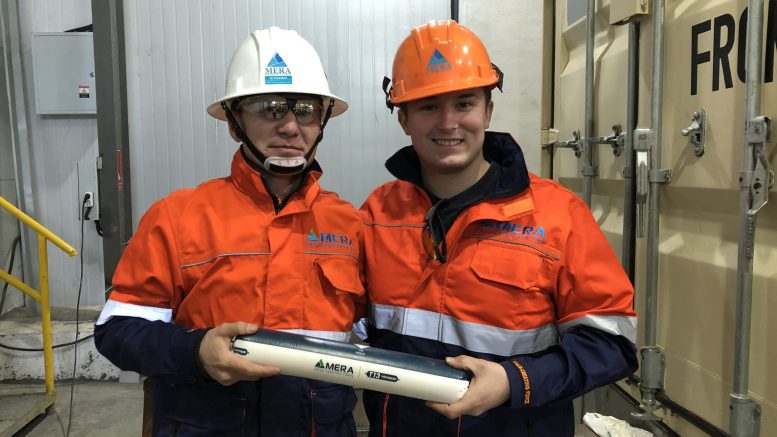As a fourth-generation explosives expert, Anthony Konya has mine blasting is in his blood.
“My great-great grandfather was a well blaster in Hungary,” Konya says. “They used to lower him down into a well in a bucket. He’d plant the dynamite, light the safety fuse and hope someone would pull him up before it went off.”
But technology has since improved those methods significantly, he noted.
As a historical footnote, blasting began in Hungary in the year 1627, and Konya is 100% Hungarian.
His great grandfather was a mining and metallurgical engineer in Ohio, and his grandfather a mining engineer who founded the International Society of Explosives Engineers.
“Since I was about two years old I’ve been out on blasts at different mine sites and construction projects,” Konya says.
After growing up in Ohio, Konya lived in Missouri, Louisiana and New Mexico, working with Cargill and Freeport McMoran. At the Missouri University of Science and Technology, Kona completed bachelor’s, master’s and PhD degrees in mining engineering and was later an adjunct professor at the Colorado School of Mines.

Kona has since become a critical consultant for the explosives industry as founder and CEO of Academy Blasting, working across the world in coal, gold, silver and copper mines, coaching managers and technicians on how to use explosives most safely and efficiently.
Konya has authored the online, on-demand Introduction to Blasting course at Edumine for two years, coaching on modern methods that have replaced old concepts to enable blasters and engineers to make significant improvements to the drilling and blasting process. Here’s a glimpse of the syllabus:
Q: What can professionals expect from the Introduction to Blasting course?
Konya: Blasting is the heart of the mining industry. Without it, there’s no way that we could do what we do. I think it’s the cornerstone of the entire industry. The way that you blast is going to determine everything from your slope stability to your crushing, your grinding, to everything you do that determines your work segmentation. [Blasting] is the first step, and without it, we wouldn’t have mining anywhere near the scale we do today.
Q: Who can benefit most from the course?
Konya: Anyone moving into a mining role at the engineering or management level that has limited experience in drilling and blasting. You have to have blasting right — even if you’re not working in the blasting arena, this course is prepared in a way that gets you up to speed enough that you can quickly and easily evaluate — is the blasting at mine site correct?
Q: What has changed in blasting techniques over the past few years?
Konya: There have been a lot of changes. Over the last five years we’ve seen a large increase in the use of electronic detonators. From a blasting perspective, it has allowed us to really hone in and design better blasts with more flexibility in the timing. They’ve also led to some safer production because there is additional testing.
We’ve had some recent innovations in the actual explosives we’re using, so the emulsions we’re using are better and last for longer periods of time. They are also more powerful.
The drilling technology has also improved, and we’re seeing a lot of new software control systems, with drills outfitted with a lot of additional sensors, we are able to better pick up the rock. New softwares are able to pull that in, with drone imagery, put together using artificial intelligence, to [tell] what that rock is doing. We can look at past blast results and really be able to tell what happened … and determine how that [next] blast is going to function.
Q: How does ESG factor into current blasting techniques?
Konya: There has been recent work done on what’s called ‘green explosives.’ It’s using hydrogen peroxide to make emulsion explosives that gets rid of all the toxic fumes from blasts and pulls nitrates out.
In these new green explosive initiatives, we’re looking at developing explosives that, underground or surface, are going to produce less toxic fumes. The end goal is to completely eliminate toxic fumes, at least as much as is feasible. It will get rid of a lot of the big clouds above the blasts from the nitrogen oxide. Carbon monoxides are also greatly reduced.
Something that we’ve been getting a lot better at in blasting is the social aspect — blasting is something that could potentially derive some hazard to local communities — we’ve been using different AI systems and softwares, tracking how much explosive we’re putting down.
Q: What are some misconceptions about blasting?
Konya: There’s always been a bad view of blasting that if you want better performance, you have to spend more money. The powder factor design said — if you want better fragmentation, less ground vibration and any factors important, put more explosive in the ground. It was a phenomenal sales pitch, but it didn’t work.
Today, we understand blasting better, the engineering principles and the modern techniques and approaches. We can change how we design a blast to get better performance, while actually using less explosives.


Be the first to comment on "Education Spotlight: Edumine’s mine blasting expert"